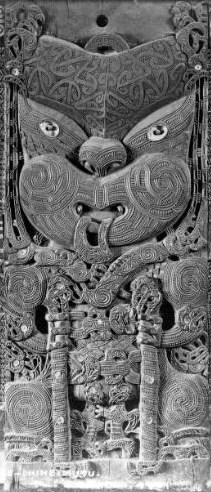Tama-te-kapua

In Māori tradition Tama-te-kapua was the captain of the Te Arawa canoe which came to New Zealand from Polynesia in about 1350. The reason for his leaving his homeland was the theft by his brother Whakaturia and himself of breadfruit (kuru or poroporo) from a tree belonging to a chief named Uenuku.[1] The Te Arawa canoe landed at Maketu, New Zealand, where Tama-te-kapua settled. His descendants peopled this part and the Rotorua region. Today their descendants say of Te Arawa canoe that the bow piece is Maketu and the stern-piece is Mount Tongariro. The meeting house at Te Papaiouru Marae is named after Tamatekapua.
References
